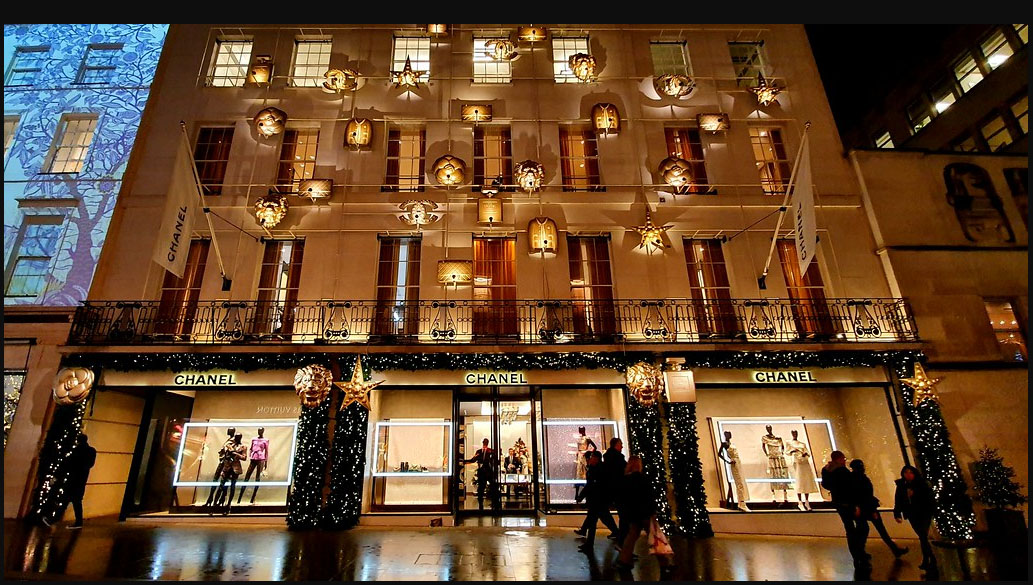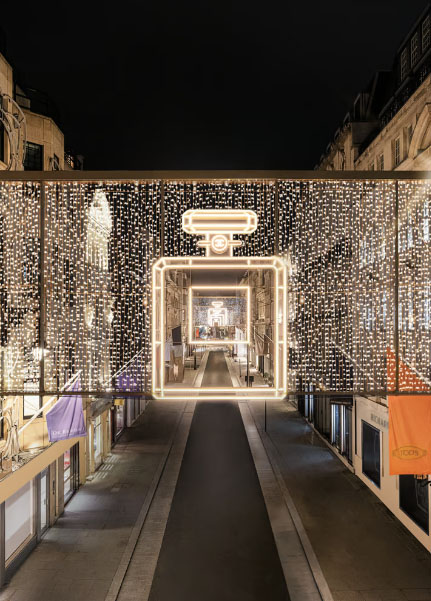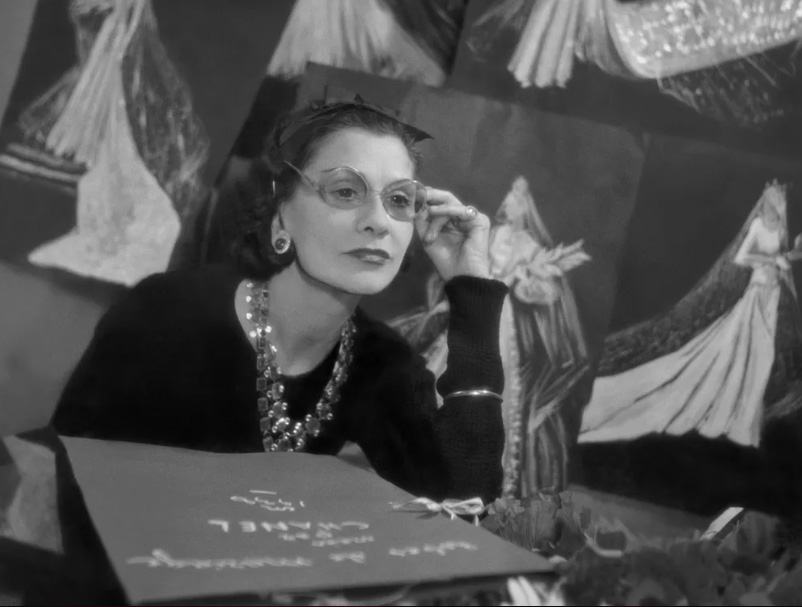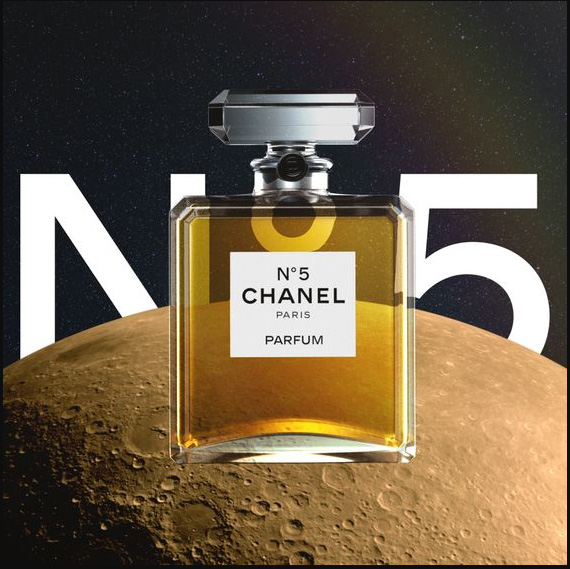
bonyadi magazine
There are few brands which have the same superstar allure as Chanel. The iconic French fashion house has represented the pinnacle of luxury fashion, beauty, and perfumes. In this history of Chanel perfume article, we hope to have provided a fascinating look at a brand (and the woman behind it all) that deserve both respect and recognition
With a reputation for elegance, quality, and sophistication, the Chanel name carries real weight. In fact, it seems impossible that it was once a small brand of no importance, struggling for the recognition of the chic fashionistas, intellectuals, and Parisian celebrities of the time
The legend that is Chanel begins with a lone woman who gave up her career as a singer to open a small clothing shop in Paris. The history of Chanel perfume, fashion, and make-up was born from this leap of faith. So this is where we will begin
Though she would die in 1971 as the inimitable, indomitable, and sophisticated Coco Chanel, she was born in 1883 as Gabrielle Bonheur Chanel in the small and ancient town of Saumur, France

When her mother passed away in 1895, twelve-year-old Gabrielle was given up to an orphanage by her overwhelmed father who struggled to make money as a peddler. It was there, under the care of Catholic nuns, that she learned how to sew. Her stage name, however, and her love for Haute Couture came later
The iconic name ‘Coco’ actually came from her brief career as a singer. As a performer in the clubs of Vichy and Moulins, Gabrielle became Coco and while some said that this name was derived from the songs that she sang, she herself said it was a shortened version of the French word ‘Cocotte’ meaning ‘kept woman
As a performer, she was exposed to more luxurious clothing and unusual styles of dress; the need to be glamorous on stage no doubt exposed her to the stiff, starchy, and uncomfortable clothes that were so in vogue during the early 1900s
Her first shop was situated on Rue Cambon
This lack of comfort, as well as her love for glamour and luxury, may have been one of the driving factors behind her move into millinery with the help of Etienne Balsan in 1910. Her first shop was situated on Rue Cambon, and initially sold hats. Soon after opening Coco left Etienne for his wealthier friend Arthur ‘Boy’ Capel, but both men were instrumental in her move towards the fashion industry

Coco later expanded to stores in Deauville and Biarritz and began to make clothes. Getting a lacklustre response at first, her big break came when she fashioned a dress out of an old woollen jersey to deal with the cold
She later said that her fortune was built on that old jumper which she altered out of a desire to stay warm. When people began to ask where she got that dress, Coco offered to make them one of their own, After she started to do this, Coco became a popular and iconic figure amongst the salons of Paris, even going on to design for the Ballets Russes and Jean Cocteau’s play Orphee
From that first dress to the iconic ‘LBD’ or Little Black Dress, the Coco Chanel brand was (and remains) focused on mixing style, fashion, and comfort; comfort, she surmised, is essential to luxury. After all, is something truly luxurious if it is not comfortable?
As her brand spread across the world, Coco began to rub shoulders with the best, brightest, and wealthiest people in the world. In the early 1920s, around about the time that she moved into the world of perfumery, she forged a relationship with the Duke of Westminster who summed her up perfectly when he said: “there is only one Chanel
Gabrielle ‘Coco’ Chanel lived the kind of life that most people only dream of; traveling the world, influencing fashion trends (creating them, in fact) and connecting with the upper classes. Never married but had many famous loves in her life affairs, although said that she never wanted to weigh on the men in her life
Whatever the details, the truth is that there never was, nor will there ever be, someone quite like Coco Chanel. While she had a personal legacy the most tangible result of her illustrious career is undoubtedly the Chanel brand, and in that arena, it is the perfume which stands a head and shoulders above all else
Perfume: Unseen Yet Unforgettable
Unlike her contemporaries, Chanel understood the romantic power of perfume and the way it connects with many people on a deeper level than clothing and make-up. She once explained that perfume was the “unseen, unforgettable, ultimate accessory of fashion

She strongly felt that perfume is a substance which announces your presence and lingers behind you, reminding everyone you know of your presence and power. And she was right, of course, today perfume is big business and many people have a ‘signature fragrance’ which those around them recognise instantly
The 1920s were perhaps the most important years of Coco Chanels life. During this decade she invented the Little Black Dress, the iconic collarless Chanel suit, and of course Chanel No 5, which remains one of the most well-known and loved perfumes of all time
Chanel No. 5: The Scent of Success
Chanel No 5 Bottle
We feel that the story of Chanel No.5 has to be told separately from the history of Chanel perfume as a whole, because of its significance to the company and wider culture.
In the early 20th century, fashion and perfume were still very much separate; fashion houses produced clothes and perfumers made perfumes, and while couturier Paul Poiret was one of the first to make a signature fragrance, it was Chanel who first put her name on the bottle.
In fact, Chanel broke more perfume norms than just that with her iconic No. 5. At this point, ‘respectable’ women wore perfumes which smelled distinctly of a singular flower.
Rose, of course, was the most popular. Mixed perfumes or those which used more ‘racy’ smells like Jasmine and Musk were the domain of courtesans and ‘loose’ women. So when Chanel challenged perfumer Ernest Beaux to create a scent that was complex and would make those who wore it smell like women rather than flowers, she was turning accepted social norms on their head.
The result, of course, was a complex and fresh perfume which was 80% natural and synthetic ingredients, fortified with aldehydes to allow women with busy lives and refined tastes to go about their day without reapplying their scent again and again.
Gabrielle Chanel Posing
What most people don’t know is that Chanels best-selling perfume was birthed through a deal with a department store owner called Theophile Bader and businessmen Paul and Pierre Wertheimer.
While Coco had a good relationship with Pierre, the deal they struck ultimately became a bone of contention; it was agreed that the Wertheimers could have 70% of profits because they produced No. 5 in their factories, Bader could have 20% for his backing, and Coco herself would take just 10% of the profits.
Chanel No. 5 became a hugely famous and profitable product, of course, so much so that it required next to no advertisement. In fact, it didn’t start being advertised in a worldwide sense until the 1940s and 50s.
The perfume was so profitable that Chanel went on to sue Bader and the Wertheimers time and time again for a renegotiated deal. This was a battle that she would fight for decades, and like so much about Coco Chanel, and the Chanel brand as a whole, the story of how it came to be resolved is part myth, part reality
It is said that Chanel wrote to German officials in 1941 as a way to regain control of her perfume. The Wertheimer brothers were Jewish, and there are those who say that Chanel used her Aryan heritage to regain sole ownership of the fragrance line
This would have been achieved by stopping the supply of French ingredients to the Wertheimer factory in Hoboken, NJ. According to the same sources, this attempt was frustrated because Paul and Pierre Wertheimer thought ahead and transferred ownership to a Christian businessman who returned ownership to them after the war
Chanel no 5 with display box
Whatever the case, the Chanel No. 5 deal was renegotiated after the war with Chanel being given 2% of the sales worldwide. This deal made her one of the wealthiest women in the world at that time and solidified her place in pop culture.
The legacy of Chanel No. 5 is that it remained both aspirational and accessible throughout the years; by offering the everyday woman a whiff of luxury in her life, Chanel No. 5 was, and is, the purest representation of what Coco Chanel herself believed fashion should be
More than this, Chanel No. 5 remained the aspirational perfume for young women well into the 70s and 80s, at which point it began to be favoured by mature women as younger demographics moved towards different scent blends
The story of Chanel No. 5 can really be said to come full circle with the 2016 launch of Chanel No. 5 L’eau. Olivier Polge designed L’eau to be a fresher and more youthful sister to the classic Chanel No. 5 mixed by Ernest Beaux.
Replacing the classic woody and powdery notes with citrusy and floral scents, it aimed to capture the hearts of the younger women who had moved away from the Chanel brand in previous years. Whether this (or any) perfume will live up to the iconic legend of the original No. 5 remains to be seen. Nonetheless, no-one can deny the power that Chanel No. 5 still has over our hearts and imaginations.
Chanel No 5
Chanel No 5 Eau De Parfum
To say that much happened between that fateful day in 1921 when the original Chanel No. 5 came into being, and the launch of L’eau in 2016 would be an understatement
In the nearly 100 years between the two events, Miss Chanel not only regained some right to the original No. 5 formula, but she turned down a marriage proposal (perhaps more than one), retired from the fashion industry, and even made a comeback at the age of 70 in the 1950s
By the time she died in 1971, in her Hotel Ritz apartment, Coco Chanel was a household name, known globally as a matriarch of the fashion industry, and had been deified in the broadway musical Coco. In this time Chanel, as a brand, created over 100 perfumes. Today they have 120 scents to their name.
Between the launch of Chanel No. 5 and the end of the second world war, Chanel created 13 fragrances, 12 of which were for women and 1 which was, unusually, a unisex fragrance.
While most perfumes from the late 19th and 20th centuries were aimed at women (purely because they spent more time, money, and effort on personal grooming as a rule), it was common for the earliest fragrances, mixed by pharmacists, to be unisex
This is why Cuir de Russie, launched in 1924, was so unusual; the leather and tobacco mix, lifted with strong aldehydes, made this scent a unique and unusual
Of course, no new perfumes were created or launched during the war itself, which means that a minimum of one perfume per year was launched during the first 12 years of their perfume history
1946 – 1971
Between the end of the war and the death of Coco Chanel in 1971, the Chanel perfume brand slowed production significantly and made just 4 fragrances. 3 of these perfumes were for women, and 1 was for men
Of these perfumes, the most iconic and well-received was undoubtedly Chanel No. 19. Launched in 1970, just a year before she sadly passed away at the age of 87. This joyous and complex fragrance captured the hearts and minds of women across the world
1972 – 2016
In the years following the death of Coco Chanel, the fashion house has released 88 fragrances, of which 11 are unisex and 18 are for men. Amongst this huge number of scents, there are many amazing perfumes, but the most memorable are undoubtedly Coco, Chance, and Bleu de Chanel
Coco, launched in 1984 was named after the iconic founder herself and carries her warm, sophisticated aura; the mix of fruity, floral, and woody notes has made it a staunch favourite with women who want elegance and luxury from their scents
Chance, which was first produced in 2005, is the spicy and sweet sister scent to Coco; a little less smoky, but just as complex, Chance does for Coco was L’eau did for Chanel No. 5. Finally, Bleu de Chanel, launched in 2010, quickly became an aspirational fragrance for men seeking a unique and sophisticated scent for their day to day life.
Chanel No5 L’EAU
Of course, this third epoch of the history of Chanel perfume came to a close with the reinvention if the perfume that started it all. Since the launch of L’eau Chanel has continued to win the hearts and minds of perfume lovers. Only time will tell what the future holds, but if history is anything to go by Chanel has years of glory ahead
Conclusion
Ingrid Visiting Chanel in London
We paid a wonderful visit to Chanel in London’s Harrods Store
This concludes our history of Chanel perfume. We hope you enjoyed reading it as much as we enjoyed putting it all together. It was quite a mission to complete this article (as we are not natural born writers!) so if you did enjoy it, we would really appreciate you sharing this with other like minded fragrance lovers
Read more about perfume
L’Oreal eyes stake in €3 billion perfume brand Amouage(2024)
What makes a ‘winter perfume’? The Wallpaper* guide to fragrances that linger on the skin and in the air(2024-25)










